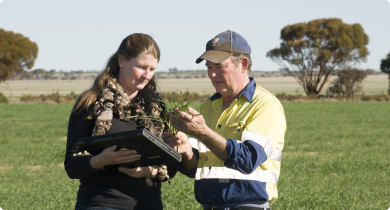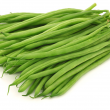Production & postharvest
The Department of Primary Industries and Regional Development contributes to the productivity, profitability and sustainability of plant-based agriculture. From broad scale dryland cropping systems to intensive irrigated production, we work with industry and business to address challenges in plant production through research and development, knowledge transfer and government policy settings.
Filter by search
Filter by topic
- (-) Remove Breeding & varieties filter Breeding & varieties
- Grains (22) Apply Grains filter
- Horticulture (18) Apply Horticulture filter
- Grains research & development (10) Apply Grains research & development filter
- Fruit (9) Apply Fruit filter
- Grapes & wine (6) Apply Grapes & wine filter
- Sowing (6) Apply Sowing filter
- Wine grapes (5) Apply Wine grapes filter
- Wheat (5) Apply Wheat filter
- Pulses (4) Apply Pulses filter
- Barley (4) Apply Barley filter
- Oats (3) Apply Oats filter
- Vegetables (3) Apply Vegetables filter
- Mangoes (3) Apply Mangoes filter
- Lupins (3) Apply Lupins filter
- Citrus (3) Apply Citrus filter
- Harvesting (3) Apply Harvesting filter
- Chickpeas (3) Apply Chickpeas filter
- Irrigation (2) Apply Irrigation filter
- Pests, weeds & diseases (2) Apply Pests, weeds & diseases filter
- Canola (2) Apply Canola filter
- Food, export & investment (2) Apply Food, export & investment filter
- Pastures (1) Apply Pastures filter
- Market development & access (1) Apply Market development & access filter
- Livestock species (1) Apply Livestock species filter
- Pest insects (1) Apply Pest insects filter
- Livestock management (1) Apply Livestock management filter
- Pests (1) Apply Pests filter
- Sheep (1) Apply Sheep filter
- Pumpkin (1) Apply Pumpkin filter
- Potatoes (1) Apply Potatoes filter
- Pome fruit (1) Apply Pome fruit filter
- Livestock & animals (1) Apply Livestock & animals filter
- Genetic modification (1) Apply Genetic modification filter
- Beans (1) Apply Beans filter
- Bananas (1) Apply Bananas filter
- Avocados (1) Apply Avocados filter
- Agricultural exports (1) Apply Agricultural exports filter
- Crop diseases (1) Apply Crop diseases filter
- Diseases (1) Apply Diseases filter
- Field peas (1) Apply Field peas filter
- Feeding & nutrition (1) Apply Feeding & nutrition filter
- Export services (1) Apply Export services filter
- Irrigated crops (1) Apply Irrigated crops filter





